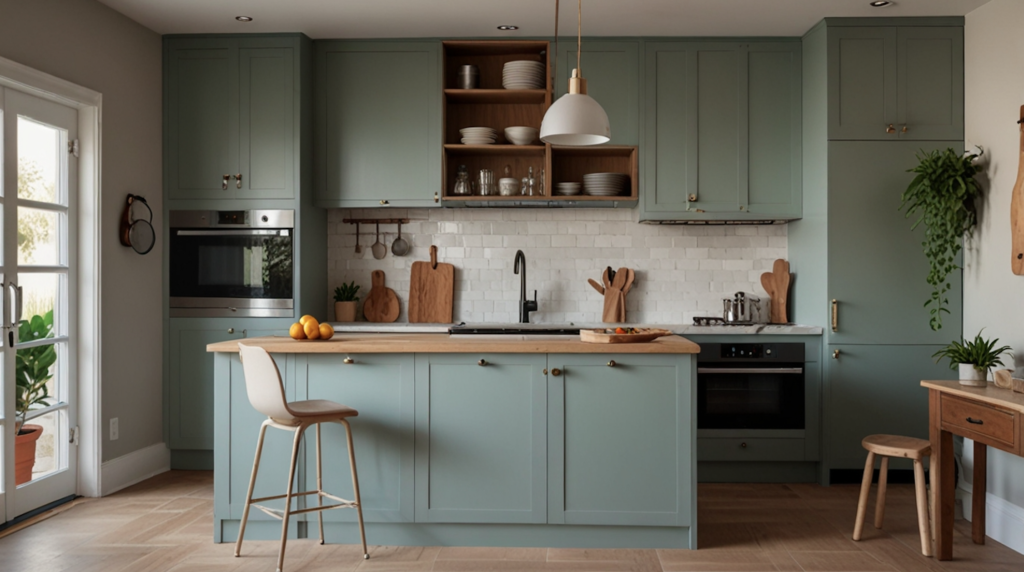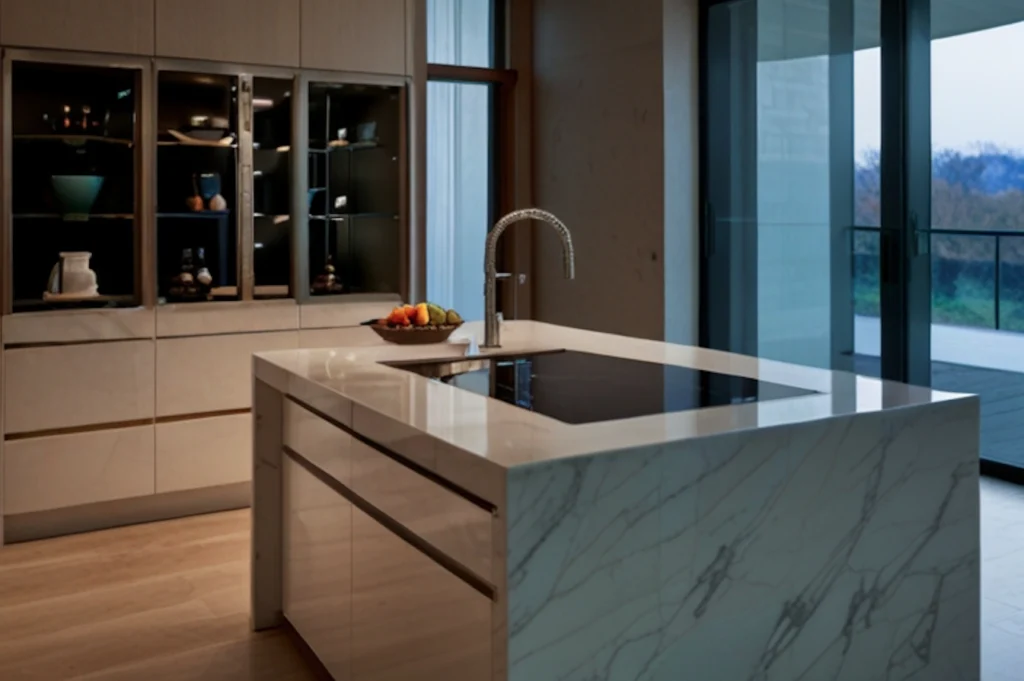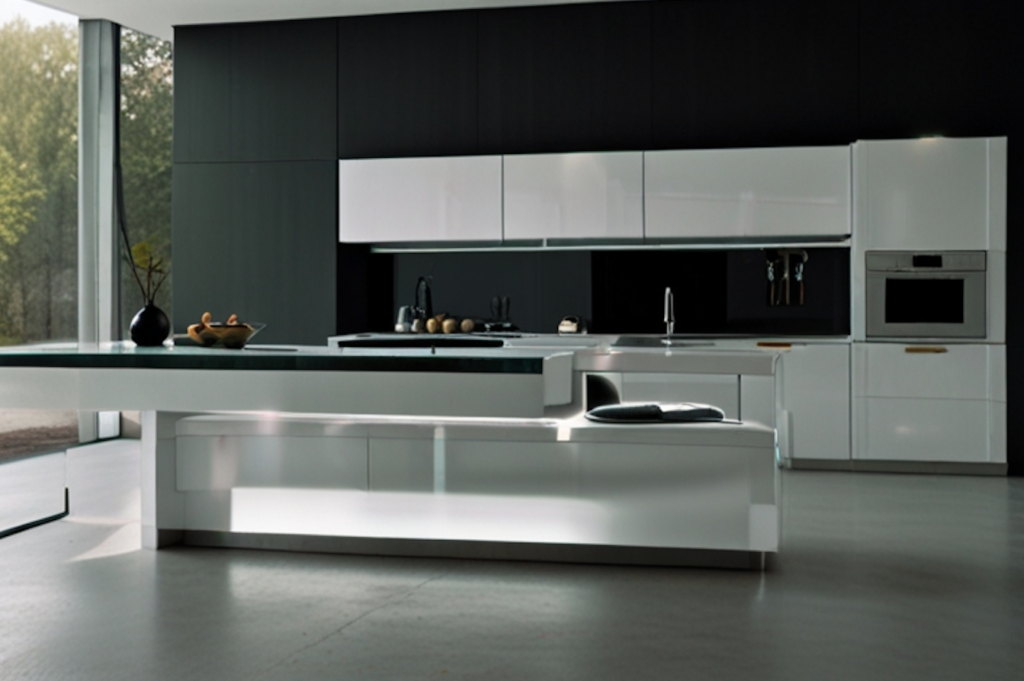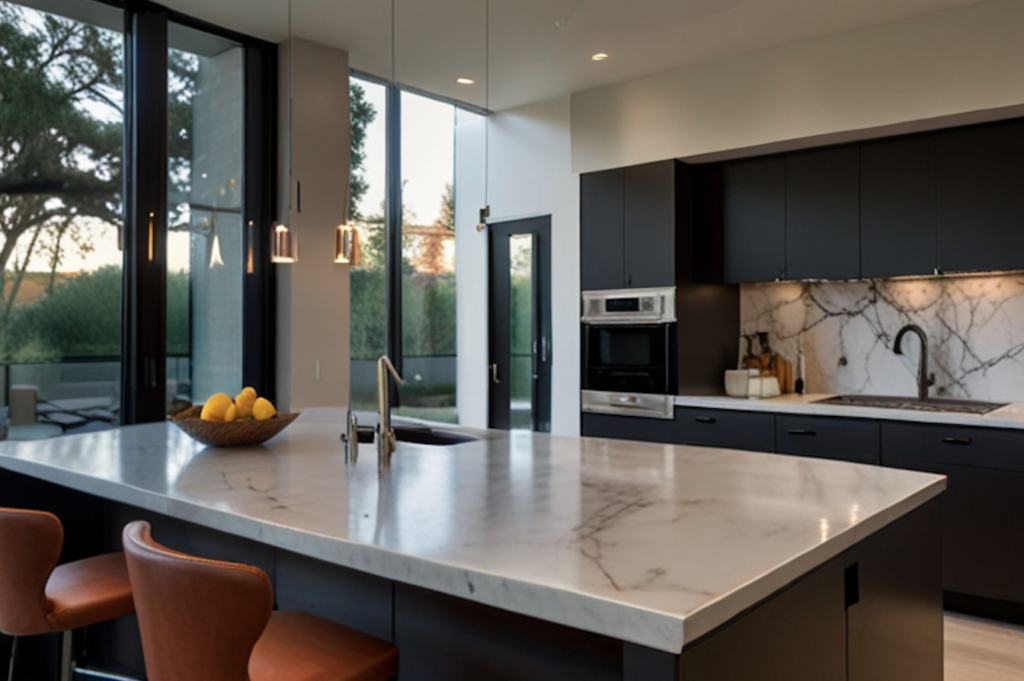For many homeowners, the kitchen is the heart of the home. It’s where meals are prepared, memories are made, and laughter fills the air. But when your kitchen is limited in square footage, designing a functional and stylish space can feel like a daunting task. Fear not! With smart space-saving solutions and creative design choices, you can transform your small kitchen into a culinary haven.
Space-Saving Strategies:
The key to maximizing functionality in a small kitchen lies in optimizing the layout and utilizing every inch of space efficiently.
- Smart Layout:
- Consider the kitchen’s traffic flow and choose a layout that promotes smooth movement. Galley kitchens with parallel countertops and L-shaped kitchens with a corner workspace are ideal for small spaces.
- Maximize vertical space by opting for tall cabinets that reach the ceiling. Open shelves can also be a great way to utilize wall space for frequently used items.
- Multifunctional Furniture:
- Think beyond traditional furniture and embrace pieces that serve multiple purposes. Island tables with built-in storage offer both prep space and additional seating. Breakfast bars with integrated benches maximize floor space and provide a casual dining area. Foldable work surfaces can be utilized for extra prep space when needed and tucked away when not in use.
- Look for furniture with hidden storage compartments like drawers or cabinets to maximize space utilization and keep the kitchen clutter-free.
- Appliance Considerations:
- Choose appliances that fit the space efficiently. Compact appliances are designed specifically for smaller kitchens, offering the same functionality in a smaller footprint. Built-in appliances like ovens and microwaves can create a seamless look and free up valuable counter space.
- Consider energy-efficient appliances, especially in small kitchens. They not only save on energy bills but also generate less heat, making the space more comfortable.
Storage Solutions:
Conquering clutter is key to creating a sense of spaciousness in a small kitchen. Here are some storage solutions to maximize every inch of your space and keep things organized:
- Maximize Every Inch:
- Utilize every available nook and cranny for storage. Corner cabinet organizers can help utilize those awkward spaces. Pull-out drawers and under-sink storage offer convenient storage for frequently used items.
- Maximize vertical space by installing wall-mounted shelves and hanging organizers. These are perfect for storing spices, cookbooks, and other kitchen essentials.
- Declutter and Organize:
- Regularly declutter your kitchen to get rid of unused items and prevent them from taking up valuable space.
- Use clear containers and labels for easy identification of what you have on hand and efficient storage.
- Utilize vertical storage for frequently used items like mugs, utensils, and spices. This frees up counter space and creates a more open feel.
- Hidden Storage:
- Incorporate hidden storage solutions to create a clean and uncluttered look. Pull-out pantries offer a discreet way to store dry goods, while appliance garages hide small appliances like toasters and blenders. Built-in spice racks and knife blocks keep these essentials readily accessible while minimizing visual clutter.
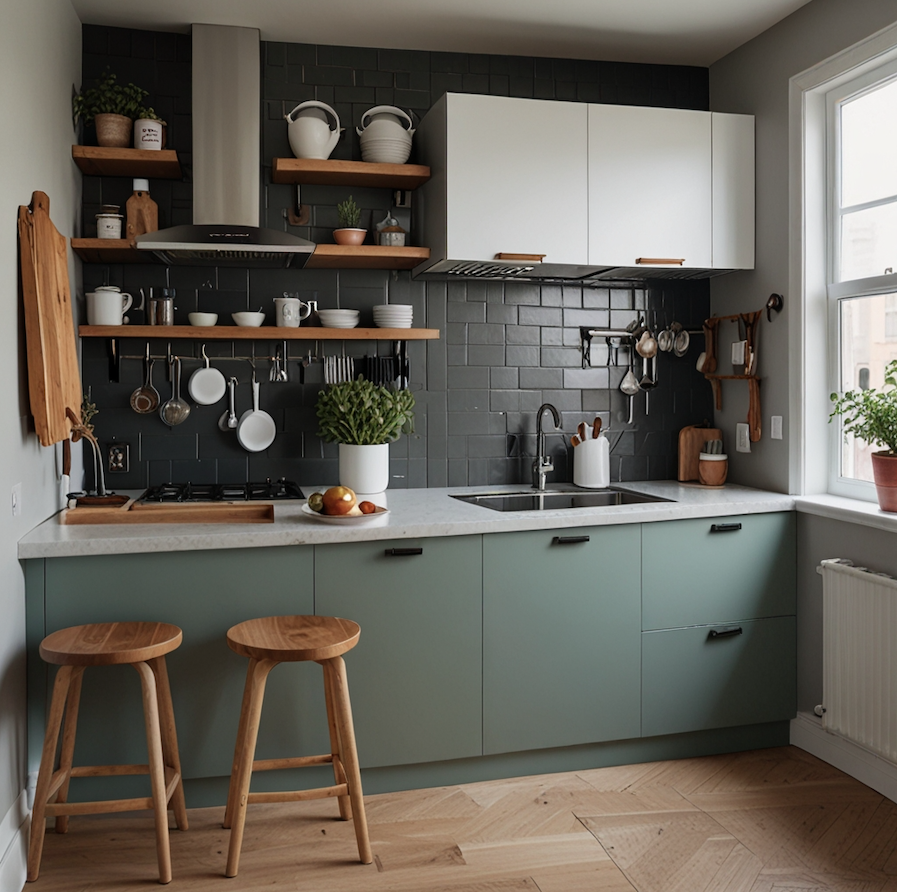
Creating a Sense of Spaciousness:
Even in a small kitchen, you can create a visually spacious and inviting atmosphere with the right design choices:
- Light and Color:
- Light plays a crucial role in making a small space feel larger and brighter. Utilize light colors like white, beige, and light gray for walls and cabinets to reflect light and create an airy feel.
- Incorporate reflective surfaces like mirrors and glass backsplashes to bounce light around the room and visually expand the space.
- Strategically use accent colors to add visual interest without overwhelming the space. A pop of color on an island or a statement piece of artwork can add personality without making the kitchen feel cramped.
- Minimalist Design:
- Embrace the principles of minimalist design to create a clean and uncluttered look in your small kitchen.
- Opt for clean lines, uncluttered surfaces, and avoid visual clutter. Open shelving can be a great way to display essential items without feeling overwhelming.
- Consider streamlined appliances and built-in options to minimize their visual footprint and create a more seamless look.
- Multifunctionality:
- As mentioned earlier, utilizing multifunctional furniture and appliances is key to maximizing space and creating a sense of openness.
- Foldable tables can be used for extra prep space when needed and tucked away when not in use. Wall-mounted appliances like microwaves and ovens free up valuable counter space.
- Hidden storage solutions like pull-out pantries and appliance garages help keep the kitchen clutter-free and visually spacious.
Additional Tips and Considerations:
While the previous sections focused on the core strategies for maximizing space and functionality, here are some additional tips to consider for your small kitchen:
- Lighting:
- Good lighting is crucial for both functionality and creating a welcoming atmosphere.
- Maximize natural light by keeping windows uncovered and utilizing skylights if possible.
- Layer artificial lighting with task lighting under cabinets, pendant lights over islands, and ambient lighting throughout the space.
- Consider using dimmer switches to adjust the lighting for different needs and moods.
- Flooring and Finishes:
- Choose light-colored and reflective flooring materials like tile or light hardwood to create a sense of spaciousness.
- Avoid busy patterns or dark colors that can visually shrink the space.
- Consider using the same flooring throughout the kitchen to create a seamless look and avoid visual breaks.
- Personalization:
- While this article provides general guidelines, remember that the ideal design for your small kitchen will depend on your specific needs, preferences, and lifestyle.
- Don’t be afraid to personalize your space with unique touches that reflect your taste and personality.
- Embrace the challenge of working with a limited footprint and get creative with your design choices.
Conclusion:
Transforming a small kitchen into a functional and stylish space requires careful planning and smart design choices. By utilizing space-saving strategies, incorporating efficient storage solutions, and creating a sense of spaciousness, you can create a kitchen that is both beautiful and functional. Remember, every inch counts, and with a little creativity, you can maximize your small kitchen’s potential and turn it into a culinary haven.

